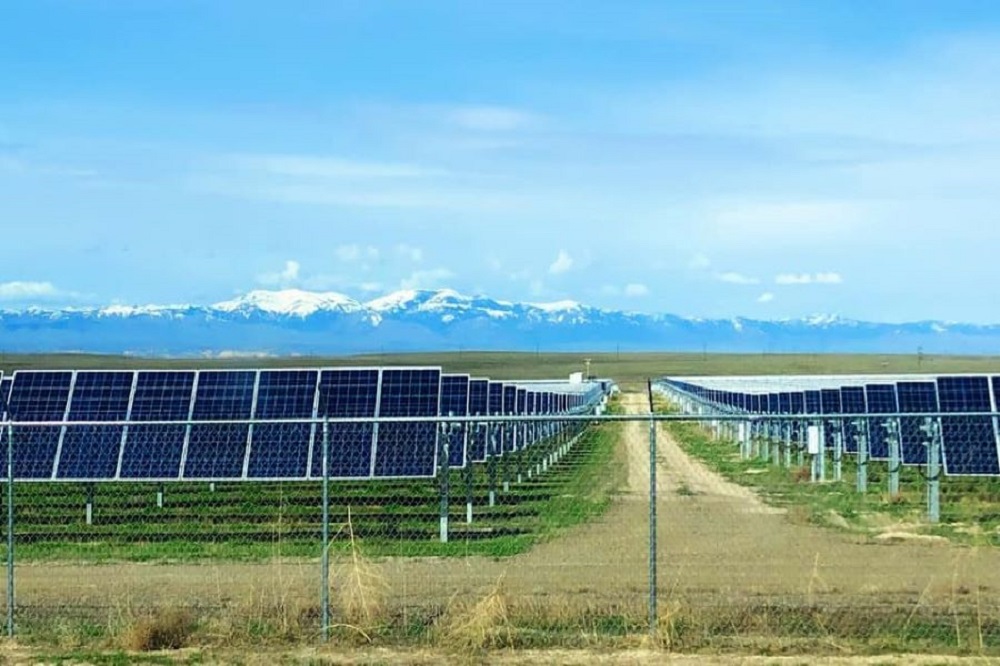Idaho has much wide-open space as it ranks the 13th least populous and 7th least densely populated of the 50 states. According to the Energy Information Administration (EIA), in 2021 Idaho generated 74% of its electricity from renewable sources, the fourth highest share of any state after Vermont, South Dakota and Washington. Idaho’s primary energy source is hydropower, the reason given by the EIA for the state having the lowest electricity rates in the country. The state gets only 4.12% of its electricity generation from solar.
According to the Solar Energy Industries Association (SEIA), Idaho has 644 MW of installed solar, or enough to power about 83,000 homes. It’s ranked 29th in the country for solar, up from 38th in 2022, and SEIA expects another 890 MW to be added in the next five years.
Solar incentives
For homeowners shopping for solar in Idaho, there are a few incentives and programs that can make it an attractive investment. First, all residential solar installations in the U.S. qualify for the 30% investment tax credit, eligible for all final installed system costs. For those who don’t have the tax liability, they can take the credit as a direct payment.
Idaho does not have a statewide net-metering policy, but each of the three investor-owned utilities has a net-metering tariff on file with the Public Utilities Commission. Net energy metering (NEM) is a process in which solar owners send their excess daytime production to the grid in exchange for credit on their utility bill, covering nighttime and cloudy day energy use. The process has been instrumental in launching distributed rooftop solar across the United States, helping homeowners secure a more resilient source of energy while saving on bills.
The net metering offerings of three utilities, Avista Utilities, Idaho Power and Rocky Mountain Power, are similar, offering: net metering to customers that generate “clean” electricity through solar, wind, hydropower, biomass or fuel cells; net metering is limited to 0.1% of its retail peak demand in a baseline year; residential systems are limited to 25 kW; and the customer is restricted from generating more than 20% of such peak production.
Slashing rates
In November 2022, private investor-owned utility, Idaho Power, announced plans to slash net metering rates for rooftop solar by as much as 60%, an unfortunate trend with ongoing NEM rulemaking cases in California and Florida, as more utilities continue to push the idea that local, distributed clean energy causes grid issues and cross-subsidization of the rich by the poor. These concepts have been debunked in California, and now an independent study of the Idaho energy market appears to have found critical issues with Idaho Power’s analysis of the value of rooftop solar.
“Idaho Power’s study fails to quantify important benefits of distributed solar that are known and measurable, will impact rates, and will benefit Idaho ratepayers and citizens,” said the report.
Idaho Power’s internal study determined that excess power generated by rooftop solar owners is worth 2.8 to 4 cents per kWh, while an independent study by Crossborder Energy determined that same energy is worth nearly five times that value at 18.3 cents per kWh. Currently, net metered rooftop solar is paid at the retail rate of energy, about 8 to 10 cents per kWh.
“This study shows what many of us already expected, that Idaho Power would use a biased approach to protect its own interests of owning and profiting from solar power,” said Lisa Young, director of the Idaho chapter of the Sierra Club. “Regulators need to step up here and make sure Idahoans interested in rooftop solar have a chance to produce their own affordable, clean energy.”
A positive trend in favor of rooftop solar are bills that state that homeowner’s associations (HOA) may keep residents from installing solar. In 2019, HB 158 was passed in Idaho, which says that HOAs may not limit or prohibit the installation of solar panels or collectors on any property rooftop or structure within its jurisdiction. They may, however, enforce reasonable rules regarding appearance of the panels.
Landmark installation
The 108 MW Grand View Solar Two in Grand View, Idaho was developed by Clenera and built by Swinerton. Clenera is a privately-held renewable energy company headquartered in Boise, Idaho that acquires, develops, builds and manages utility-scale solar farms and energy storage facilities throughout the U.S. The facility, which came online in 2016, sits on 670 acres of farmland in Elmore County and produces enough electricity to power nearly 17,000 homes. Backed by a 20-year power purchase agreement with Idaho Power, it was among the first utility-scale projects to be brought online in Idaho.
The pv magazine usa tour of solar incentives last stopped in Kansas, and next will move on to Wyoming.
To read the ongoing series on 50 states of solar incentives, click here.
This content is protected by copyright and may not be reused. If you want to cooperate with us and would like to reuse some of our content, please contact: editors@pv-magazine.com.









By submitting this form you agree to pv magazine using your data for the purposes of publishing your comment.
Your personal data will only be disclosed or otherwise transmitted to third parties for the purposes of spam filtering or if this is necessary for technical maintenance of the website. Any other transfer to third parties will not take place unless this is justified on the basis of applicable data protection regulations or if pv magazine is legally obliged to do so.
You may revoke this consent at any time with effect for the future, in which case your personal data will be deleted immediately. Otherwise, your data will be deleted if pv magazine has processed your request or the purpose of data storage is fulfilled.
Further information on data privacy can be found in our Data Protection Policy.